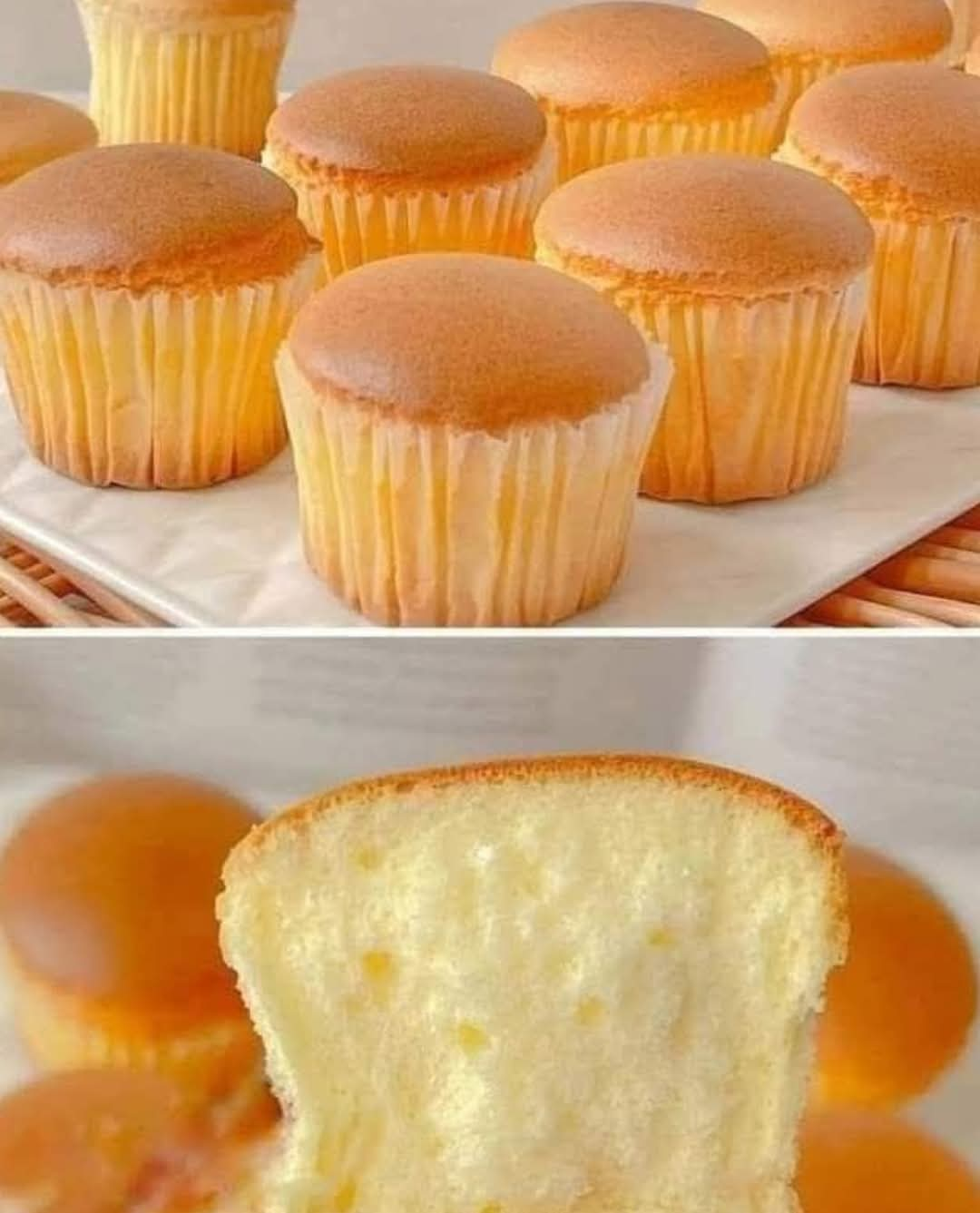Here is a comprehensive recipe guide for Mini Chinese Sponge Cakes, including their history, benefits, ingredients, preparation methods, nutrition facts, and more.
Mini Chinese Sponge Cakes: A Delicate Treat with a Rich Legacy
Mini Chinese sponge cakes, often known as “鸡蛋糕 (jī dàn gāo),” are soft, fluffy, and subtly sweet. They are a nostalgic dessert found in Chinese bakeries and traditional dim sum spreads. These golden cakes are typically steamed or baked in small molds, and their light texture comes from a perfectly aerated egg mixture. These cakes are reminiscent of childhood for many and are a symbol of simplicity and celebration.
Ingredients
- 1 cup all-purpose flour
- 1/4 cup custard powder
- 1 tsp baking powder
- 1/2 tsp baking soda
- 4 large eggs, room temperature
- 3/4 cup granulated sugar
- 1/4 cup whole milk
- 1/4 cup vegetable oil (neutral oil like canola or sunflower)
- 1 tsp vanilla extract
Preparation Method
Step 1: Preheat and Prepare
- Preheat your oven to 350°F (175°C).
- Line a mini cupcake or muffin pan with paper liners or lightly grease the pan.
Step 2: Sift Dry Ingredients
- In a medium bowl, sift together the flour, custard powder, baking powder, and baking soda. Set aside.
Step 3: Whip the Eggs and Sugar
- In a large mixing bowl, beat the eggs and sugar together using an electric mixer on high speed until the mixture becomes pale, thick, and fluffy (about 5–7 minutes).
- This aeration is critical for the sponge-like texture.
Step 4: Fold and Combine
- Gently fold in the sifted dry ingredients in batches to the egg mixture using a spatula. Avoid deflating the batter.
- Combine milk, oil, and vanilla extract in a small bowl, then drizzle it into the batter slowly while folding gently.
Step 5: Fill and Bake
- Spoon the batter into the prepared mini molds, filling each about ¾ full.
- Bake for 15–18 minutes or until a toothpick inserted comes out clean and tops are lightly golden.
Step 6: Cool and Serve
- Allow the cakes to cool in the pan for a few minutes, then transfer to a wire rack to cool completely.
History and Origin
The mini sponge cake has deep roots in Chinese cuisine, inspired by both Western sponge cakes and traditional steamed egg cakes. In older times, these cakes were prepared without ovens, using bamboo steamers, making them widely accessible. Their simplicity made them a staple in many Chinese households and tea shops. Over time, Western baking techniques fused with this heritage to give us today’s oven-baked version.
Benefits
- Light Texture: Unlike dense cakes, these are airy and easy to digest.
- Lower Fat Content: With minimal oil and no butter, they’re lower in fat than traditional Western cakes.
- Customizable: You can infuse them with citrus zest, green tea, or fill them with red bean paste.
- Kid-Friendly: Their bite-size and subtle sweetness make them perfect for lunchboxes or tea parties.
Formation and Structure
These mini sponge cakes rely on the emulsification and aeration of eggs to rise, rather than heavy leaveners. The custard powder adds a smooth, creamy note and a hint of yellow color. When baked properly, their tops are lightly domed, with a soft, springy crumb and moist interior.
Nutrition Facts (Per Mini Cake, Approximate)
- Calories: 90
- Fat: 3g
- Carbohydrates: 13g
- Sugars: 8g
- Protein: 2g
- Fiber: 0.2g
- Cholesterol: 35mg
Conclusion
Mini Chinese sponge cakes are more than just a sweet snack—they’re a cultural bridge between generations and cuisines. Their simplicity is what makes them timeless. Whether enjoyed with tea, gifted to a neighbor, or tucked into a child’s school bag, these cakes bring comfort and delight in every bite.
Lovers of Mini Sponge Cakes Say:
- “It reminds me of my grandmother’s kitchen—warm, sweet, and full of love.”
- “They’re the perfect bite-sized treat. Not too sweet, just right.”
- “I make these for every family gathering. They disappear in minutes!”
Would you like a printable version of this or a visual step-by-step diagram?
